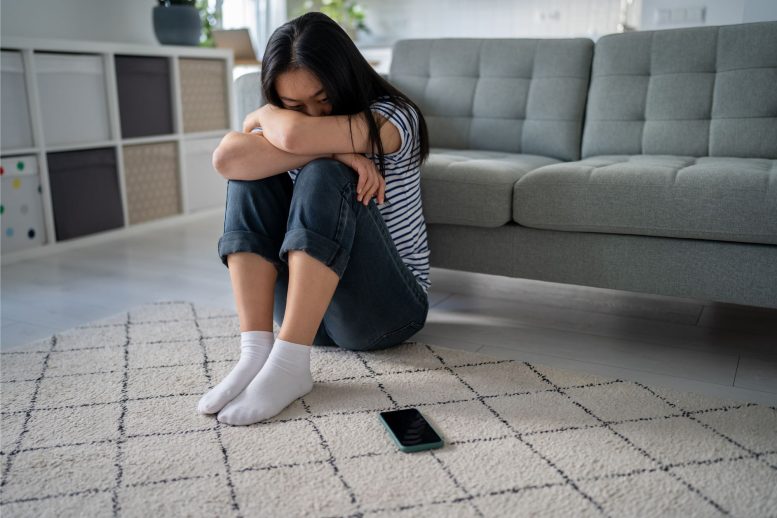
Research indicates that women struggle more than men with the emotional aftermath of later-life divorces, break-ups, or bereavement, as shown by higher and more prolonged increases in antidepressant use. Despite a brief reduction in antidepressant use after re-partnering, this effect is notably short-lived for women, underscoring the unique challenges they face in adjusting to these life changes and the need for targeted support.
Their use of antidepressants is higher and tails off only slightly and briefly after re-partnering.
If the patterns of antidepressant use are any indication, a large, long-term study published in the Journal of Epidemiology & Community Health suggests that women might struggle more than men to emotionally cope with a divorce or the end of a relationship in later life.
While both sexes increased their antidepressant use in the run-up to, and immediate aftermath of, a divorce, break-up, or bereavement, women’s use of these drugs was greater than men’s. And while re-partnering was associated with a slight reduction in antidepressant use in both sexes, it was particularly short-lived in women, the study findings indicate.
Due to population aging, ‘grey divorce’ from the age of 50 onwards is on the rise in high-income countries, and consequently, so is re-partnering, note the researchers.
Trends in Later Life Relationship Changes
Later-life depression is also relatively common, with an estimated 10–15% of over-55s experiencing clinically significant depressive symptoms, they add. But few studies have looked at the psychological impact of later life divorce/relationship break-ups, or bereavement, or a new relationship on antidepressant use.
The researchers therefore decided to track the patterns of antidepressant use between 1996 and 2018 among 228,644 older Fins, aged 50 to 70, who had gone through divorce, relationship break-up, or bereavement, and the impact of subsequent re-partnering in those who had done so.
In all, 85,031 (37%) were bereaved; 75,009 (33%) were divorced; and 68,604 (30%) stopped living with a partner as a result of a breakup. Subsequently 53,460 people entered into a new relationship within 2 to 3 years, on average: 31,238 after a break-up; 15,958 after a divorce; and 6,264 after the death of their partner.
More men than women re-partnered after bereavement or a relationship break-up. There were no obvious sex differences in re-partnering after a divorce.
Antidepressant Use Patterns
Both men and women whose partners died, increased their use of antidepressants between 4 and 1 year(s) before the event, with a steep increase in the 3 months before and the 3 months afterward: by just under 5.5% in men; by nearly 7% in women. Use fell back subsequently but still remained higher than before.
Similarly, antidepressant use increased in the 6 months before divorce for both sexes: by 5% in men; by 7% in women. Immediately afterward it fell back for both men and women, stabilizing after 1 year. But it remained higher than before the divorce.
Women experiencing a break-up significantly increased their use of antidepressants in the 4 years preceding the event. Men also upped their use of these drugs, but to a much lesser extent: by just over 3% compared with 6% among the women.
Within a year, antidepressant use fell back to the level it was 12 months before the break-up and subsequently remained at that level among the men. But it was a different story for women as their use tailed off only slightly immediately afterwards, and was short-lived, increasing again from the first year onwards.
“The partial recovery and the continuous increase in [antidepressant] use appear to support the marital resource model which…suggests that losing the partner may bring stressful changes in life circumstances (eg, decreased household income, loss of social support) that persist or accumulate over time,” explain the researchers.
“The resource model still seems to apply more to women who separated from co-habitation than to their male counterparts.”
The Role of Re-partnering
Small falls in [antidepressant] use associated with re-partnering were observed, but they were short-lived as use of these drugs returned to the level observed before re-partnering or remained even higher 2 years afterward, “supporting the honeymoon effect documented in prior research, particularly among bereaved individuals,” note the researchers.
While gender role differences may help explain some of the heavier mental health consequences for women, they usually have better social networks than men to help mitigate some of these effects, suggest the researchers.
“The greater increases in [antidepressant] use associated with union dissolution among women in our study may indeed relate to the fact that the costs of union dissolution on mental health fall more heavily on women than men,” they write.
“The smaller declines in [antidepressant] use associated with re-partnering in women than in men may be related to the explanations that marriage benefits men’s mental health to a greater extent than women’s, and older men are more likely than women to seek emotional support from re-partnering.
“In addition, women may take greater responsibilities to manage interpersonal relationships between the blended families, such as those with the partner’s children, which could undermine their mental health,” they add.
This is an observational study, and as such, can’t establish cause. And the researchers acknowledge various limitations to their findings, including the inability to account for the number and length of partnerships. Family support networks and living arrangements, which weren’t fully examined, may also have had some bearing on the use of these drugs.
But they conclude: “Our findings underscore the challenges of adapting to union dissolution in later life and the associated need for support.”
Reference: “Trajectories of antidepressant use before and after union dissolution and re-partnering in later life: a prospective total population register-based cohort study” by Yaoyue Hu, Niina Metsä-Simola, Satu Malmberg and Pekka Martikainen, 6 February 2024, J Epidemiol Community Health.
DOI: 10.1136/jech-2023-221529









“If the patterns of antidepressant use are any indication, …”
That is a big “IF,” and should have been the first question answered.